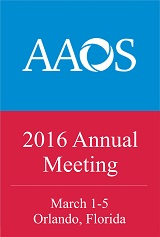
AAOS 2016: Leg length discrepancy with closing vs. opening wedge high tibial osteotomy
CONFERENCE ACE REPORTS
This ACE Report is a summary of a conference presentation or abstract. The information provided has limited the ability to provide an accurate assessment of the risk of bias or the overall quality. Please interpret the results with caution as trials may be in progress and select results may have been presented.
Synopsis
60 patients undergoing high tibial osteotomy were randomized to undergo either lateral closing wedge or medial opening wedge high tibial osteotomy. The purpose of this study was to compare leg length changes and leg length discrepancies between these two methods, as well as to determine if there were any predictive factors related to the change in leg length with either technique. The results disp...
To view the full content, login to your account,
or start your 30-day FREE Trial today.
FREE TRIAL
LOGIN
Forgot Password?
Explore some of our unlocked ACE Reports below!

Learn about our AI Driven
High Impact Search Feature
Our AI driven High Impact metric calculates the impact an article will have by considering both the publishing journal and the content of the article itself. Built using the latest advances in natural language processing, OE High Impact predicts an article’s future number of citations better than impact factor alone.
Continue



 LOGIN
LOGIN

Join the Conversation
Please Login or Join to leave comments.